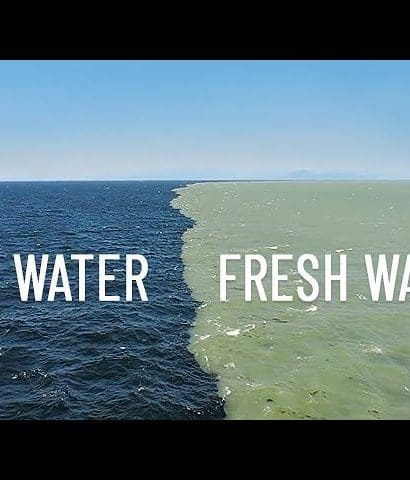
The remarkable adaptability of certain fish species to thrive in both freshwater and saltwater environments has captivated scientists and nature enthusiasts alike. These exceptional creatures possess unique biological mechanisms that enable them to withstand the diverse challenges presented by these contrasting habitats.
Understanding the reasons behind their ability to survive in two vastly different worlds sheds light on the fascinating world of aquatic adaptation. In this article, we will explore the intriguing question: “Why can some fish survive in freshwater and saltwater?” By delving into the physiological and behavioral adaptations of these euryhaline fish, we gain valuable insights into the delicate balance that exists within our planet’s aquatic ecosystems.
Contents
Differences Between Freshwater and Saltwater.🐟
Freshwater and saltwater are two distinct types of aquatic environments, each characterized by unique chemical compositions. These contrasting ecosystems play a vital role in shaping the distribution and adaptation of aquatic organisms. Understanding the fundamental chemical differences between freshwater and saltwater is essential to comprehend the challenges and adaptations faced by aquatic life. In this article, we will delve into the primary chemical disparities between these two types of water, with a specific focus on salt concentration, osmolarity, and other factors that significantly influence the survival and thriving of aquatic organisms.
Explanation of the main chemical differences between freshwater and saltwater:
Freshwater and saltwater differ primarily in their salinity levels, which is the concentration of dissolved salts in the water. Freshwater bodies, such as rivers, lakes, and ponds, typically have a low salt content, usually around 0.5 parts per thousand (ppt) or less. On the other hand, saltwater bodies, such as oceans and seas, have a much higher salt content, averaging around 35 ppt. This pronounced variation in salinity plays a pivotal role in shaping the physicochemical properties of these aquatic ecosystems.
Salt concentration and its impact on aquatic life:
The differing salt concentrations profoundly impact the osmoregulation processes of aquatic organisms. In freshwater environments, the surrounding water contains a lower salt concentration than the body fluids of most aquatic animals. As a result, freshwater species face a constant challenge of absorbing water through osmosis, which can lead to swelling and electrolyte imbalances. To cope with this, freshwater fish and other organisms have developed specialized mechanisms, such as efficient excretion and active ion uptake through specialized gills and kidneys, to maintain their internal osmotic balance.
Osmolarity and its role in aquatic adaptation:
Osmolarity refers to the total concentration of solute particles in a solution, including salts and other substances. In saltwater, the osmolarity is higher than that of most marine organisms, leading to water loss through osmosis. To counter this osmotic stress, marine organisms, including saltwater fish, have evolved mechanisms to conserve water and excrete excess salts. Their gills and kidneys play a critical role in filtering out excess salts and retaining water, ensuring they remain adequately hydrated and maintain their internal osmotic balance.
Other factors influencing aquatic life:
In addition to salinity and osmolarity, other factors such as temperature, pH levels, dissolved oxygen, and nutrient availability also play crucial roles in influencing the distribution and behavior of aquatic organisms. These environmental factors interact in complex ways, influencing the biodiversity and ecological dynamics of freshwater and saltwater ecosystems.
Adaptations of Fish to Saltwater Environments.🐟
Fish have displayed an incredible ability to adapt to various aquatic environments, including the challenging and dynamic world of saelwater. In this article, we will explore the remarkable adaptations that enable certain fish species to thrive in marine environments. These adaptations encompass a range of specialized physical and physiological traits that equip these aquatic inhabitants to survive and flourish in the high salinity of the oceans and seas.
Specializations for living in marine environments:
Fish species that inhabit saltwater environments have evolved unique specializations that make them well-suited to life in the sea. Unlike their freshwater counterparts, marine fish face the constant challenge of maintaining water balance due to the higher salt concentration in their surroundings. Some fish have become exclusively adapted to life in saltwater and are rarely found in freshwater bodies. These marine specialists have developed a host of adaptations that enable them to exploit the vast resources of the oceans and cope with the harsh conditions found in marine ecosystems.
Physical adaptations for surviving in high salinity:
One of the most critical challenges for marine fish is coping with the osmotic pressure caused by the higher salt concentration in the surrounding water. To counteract water loss through osmosis, marine fish have developed specialized structures such as salt-secreting cells in their gills to actively remove excess salts from their bodies. Additionally, some species have evolved to have impermeable scales and skin, reducing water loss and preventing the entry of excess salt into their bodies.
Physiological adaptations to osmoregulation:
Marine fish possess sophisticated physiological adaptations that enable them to regulate their internal osmotic balance effectively. Their kidneys play a crucial role in excreting excess salts while conserving water, aiding in maintaining proper salt and water levels in their bodies. Additionally, these fish have adapted their ion transport systems in their gills and intestines to efficiently absorb essential ions, such as sodium and chloride, from the water.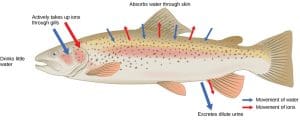
Coping with high salt intake through specialized diets:
Some marine fish have evolved specialized diets that help them cope with the high salt intake from their environment. For instance, they may consume marine plants or invertebrates rich in water and low in salt content to balance their internal osmotic levels.
Adaptations of Fish to Freshwater Environments.🐟
Freshwater habitats, such as rivers and lakes, present a diverse and complex environment for fish species. To thrive in these unique ecosystems, fish have developed a wide range of adaptations that allow them to face specific challenges posed by the lower salinity levels and different environmental factors of freshwater. In this article, we will explore the fascinating adaptations of fish that inhabit rivers and lakes, focusing on their peculiarities and how they have evolved to tackle challenges such as salinity dilution in freshwater.
Peculiarities of fish in rivers and lakes:
Fish that reside in freshwater environments exhibit a distinct set of characteristics that set them apart from their saltwater counterparts. They have evolved to live in relatively stable and less saline habitats, with adaptations that suit the specific conditions of rivers and lakes. Unlike marine fish, they face the constant challenge of preventing excessive water intake, as they are surrounded by water with a lower salt concentration than their body fluids.
Coping with the dilution of salts in freshwater:
One of the primary challenges for freshwater fish is the potential loss of essential ions and salts due to the osmotic pressure created by the lower salinity of their surroundings. To address this, freshwater fish have developed several adaptations:
a. Efficient salt absorption:
Freshwater fish possess specialized ion-transporting cells in their gills and intestines that actively absorb essential ions, such as sodium and chloride, from the surrounding water. This adaptation helps maintain the appropriate balance of salts in their bodies.
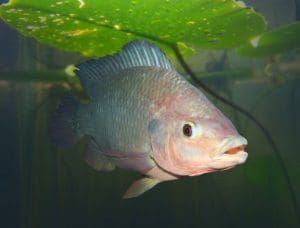
b. Reduced salt excretion:
Unlike marine fish, which need to excrete excess salts, freshwater fish have adapted their kidneys to conserve essential salts and minimize their loss through urine.
c. Dilute urine production:
Freshwater fish produce large volumes of dilute urine to expel excess water without losing too many essential salts. This adaptation is crucial for preventing over-hydration and maintaining internal balance.
d. Efficient osmoregulation:
Freshwater fish have sophisticated osmoregulatory mechanisms that ensure they retain sufficient water while preventing water intoxication. Their gills play a vital role in controlling water movement and maintaining osmotic balance.
Adaptations for diverse freshwater environments:
Different types of freshwater habitats, such as fast-flowing rivers, stagnant ponds, and deep lakes, offer a wide range of challenges for fish. As a result, various fish species have evolved specific adaptations to suit their respective niches. For example, fish in fast-flowing rivers may have streamlined bodies and powerful fins to navigate against the current, while those in stagnant ponds might have specialized respiratory structures to cope with lower oxygen levels.
Euryhaline Fish.🐟
Euryhaline fish are a fascinating group of aquatic species capable of surviving and thriving in both freshwater and saltwater environments. Unlike stenohaline fish, which can only tolerate a narrow range of salinities, euryhaline fish possess remarkable physiological and behavioral adaptations that allow them to transition between various levels of salinity. In this article, we will introduce the concept of euryhaline fish and explore some well-known species that have evolved to inhabit and thrive in both freshwater and saltwater habitats.
Euryhaline fish:
Euryhaline fish, derived from the Greek words “eu” (meaning “wide”) and “haline” (meaning “saline”), are a group of fish species known for their ability to survive in a broad range of salinities. These remarkable creatures possess adaptations that allow them to osmoregulate and maintain the proper balance of salts and water in their bodies, regardless of whether they are in freshwater or saltwater.
Notable euryhaline species and their adaptations:
A. Atlantic Salmon (Salmo salar): The Atlantic salmon is one of the most famous euryhaline fish. Born in freshwater rivers, young salmon undergo a unique lifecycle where they migrate to the ocean to grow and mature before returning to their natal rivers to spawn. Their bodies undergo remarkable physiological changes during their marine phase, adapting to the high salinity of the ocean. They possess specialized gills and kidneys that enable efficient ion regulation and water balance in both environments.
b. American Eel (Anguilla rostrata): American eels are euryhaline species known for their impressive migrations. They begin their lives in freshwater rivers, then migrate to the ocean to reproduce in the Sargasso Sea. The adult eels can tolerate significant changes in salinity during their migratory journey. To adapt to different salinity levels, they have flexible gill structures that allow them to efficiently exchange ions and regulate water movement.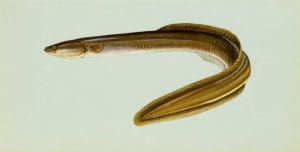
c. Goby Fish (Gobioidei family): Goby fish are a diverse group of euryhaline species found in both freshwater and saltwater environments worldwide. Many goby species exhibit remarkable adaptability, with some even able to survive in brackish water, which is a mix of freshwater and saltwater. They possess specialized ion pumps in their gills that allow them to maintain ion balance in different salinities.
Evolution of euryhaline adaptations:
The ability of euryhaline fish to thrive in both freshwater and saltwater environments is a result of millions of years of evolutionary processes. Their ancestors likely inhabited specific habitats, but over time, environmental changes and opportunities led to the development of versatile adaptations. These adaptations allowed them to expand their ranges and occupy diverse habitats, making them highly successful and resilient fish species
Osmoregulatory Mechanisms in Fish.🐟
Osmoregulation is a critical physiological process that allows fish to maintain the delicate balance of water and salts in their bodies. As aquatic organisms, fish constantly encounter environments with varying salinity levels, presenting challenges to their internal osmotic balance. In this article, we will explore the osmoregulatory mechanisms that enable fish to adjust to changing environments and prevent dehydration or swelling caused by differences in salinity.
Maintaining osmotic balance in fluctuating environments:
Fish encounter a wide range of salinity conditions, from freshwater to saltwater, and must adapt to survive in these ever-changing habitats. Osmoregulatory mechanisms enable them to maintain stable internal environments despite external fluctuations in salinity. These mechanisms are essential for fish to cope with the osmotic stress imposed by differences in salt concentrations between their bodies and the surrounding water.
Preventing dehydration in freshwater environments:
In freshwater habitats, fish face the challenge of osmotic gain, as water tends to flow into their bodies due to the higher salt concentration inside their cells. To counter this, fish have evolved specialized adaptations, such as:
a. Active ion uptake: Fish have ion-transporting cells in their gills and intestines that actively absorb essential ions, like sodium and chloride, from the water. This uptake helps to maintain the necessary concentration of salts inside their bodies.
b. Dilute urine production: Freshwater fish produce large volumes of dilute urine to expel excess water without losing essential ions. This process helps regulate their internal osmotic balance and prevent over-hydration.
Avoiding swelling in saltwater environments:
In saltwater environments, fish experience the opposite challenge, facing osmotic loss of water to the more saline surroundings. To prevent dehydration, fish have developed adaptive strategies, including:
a. Specialized salt-secreting cells: Some fish possess specialized cells in their gills that actively excrete excess salts from their bodies. This process helps maintain their internal osmotic balance and prevents dehydration.
b. Concentrated urine production: In saltwater, fish produce small volumes of concentrated urine to conserve water and prevent excessive water loss. This adaptation helps them retain sufficient body fluids and prevent dehydration.
The role of gills in osmoregulation:
The gills of fish play a central role in osmoregulation, serving as the primary site for ion and water exchange between the fish and its environment. The specific structure and function of gill cells allow for the active transport of ions, aiding in the maintenance of osmotic balance. The efficiency of these gills varies among fish species, contributing to their adaptability to different salinity levels.
Environmental Factors Influencing Adaptation in Fish.🐟
The adaptation of fish to their aquatic environments is a dynamic process that is greatly influenced by various environmental factors. Changes in the environment can have significant effects on the survival and well-being of fish in both freshwater and saltwater habitats. In this article, we will explore how environmental factors impact the capacity of fish to survive in these diverse aquatic environments, including examples of pollution, climate change, and other factors that impact their habitats.
Impact of environmental changes on fish adaptation:
Environmental changes can directly affect the physiology, behavior, and distribution of fish species. Alterations in water quality, temperature, and other key factors can challenge the osmoregulatory mechanisms of fish, making it more difficult for them to maintain their osmotic balance and survive in their respective habitats.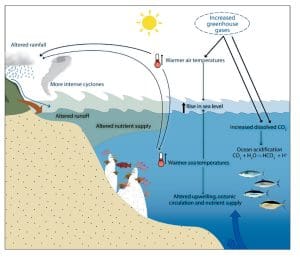
Pollution and its consequences:
Pollution, such as industrial runoff, agricultural chemicals, and waste disposal, can introduce harmful substances into aquatic ecosystems. These pollutants can adversely affect fish in various ways, including:
a. Disruption of osmoregulation: Toxic substances can impair the functioning of ion-transporting cells in fish gills, hindering their ability to regulate salts and water.
b. Decreased oxygen levels: Pollution can lead to reduced oxygen availability in water, impacting fish respiration and limiting their survival.
c. Bioaccumulation: Pollutants can accumulate in fish tissues over time, potentially leading to health issues and reduced reproductive success.
Climate change and its effects on aquatic habitats:
Global climate change has far-reaching consequences for aquatic environments. Rising temperatures, altered precipitation patterns, and sea-level changes can impact fish in various ways, including:
a. Shifts in distribution: Fish species may migrate to different regions to find suitable temperature and salinity conditions, leading to changes in community composition.
b. Changes in reproductive timing: Warmer temperatures can influence the timing of fish spawning, potentially affecting the success of their offspring.
c. Ocean acidification: Increased carbon dioxide levels in the atmosphere contribute to ocean acidification, affecting the availability of essential ions and potentially impacting fish development and growth.
Habitat destruction and fragmentation:
Human activities, such as dam construction, deforestation, and urban development, can lead to the destruction and fragmentation of fish habitats. These changes can disrupt migration routes, reduce available breeding areas, and isolate fish populations, limiting their genetic diversity and resilience to environmental stressors.
The Importance of Conservation.🐟
The conservation of fish and their aquatic habitats is essential for the well-being of our planet and its inhabitants. From the remarkable adaptations of euryhaline fish to the delicate balance of osmoregulation in diverse environments, fish provide valuable insights into the wonders of aquatic life. The interconnectivity of freshwater and saltwater ecosystems highlights the importance of considering the holistic health of all aquatic environments.
By valuing conservation efforts, we can ensure the survival of numerous fish species, maintain the ecological stability of aquatic ecosystems, and secure the resources necessary for sustainable fisheries. Moreover, protecting these habitats contributes to mitigating climate change and preserving the intricate web of life that thrives in our oceans, rivers, and lakes.
As stewards of the environment, it is our responsibility to act as advocates for conservation and strive to protect the delicate balance of aquatic life. Through education, responsible practices, and collective efforts, we can make a positive impact on the future of fish and their aquatic habitats, safeguarding these valuable resources for generations to come.


